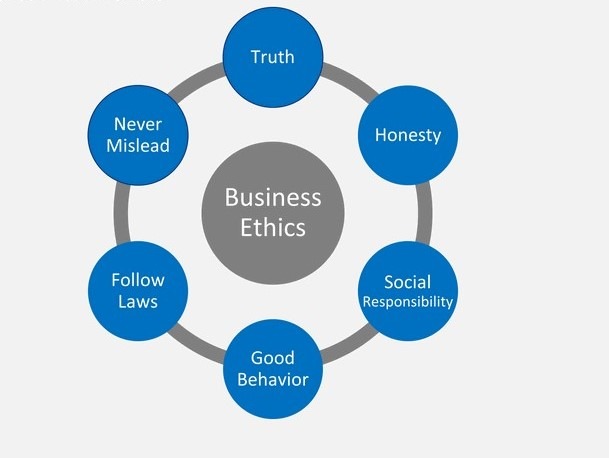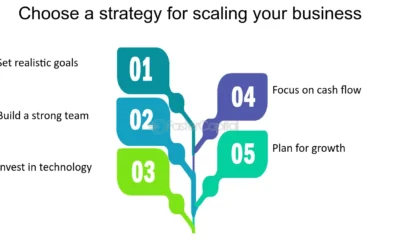Business
Business Principles – Chapter 3 Flashcards
Published
7 months agoon
By
Admin
Flashcard Set: Business Principles – Chapter 3
Flashcard 1
Q: What is a business plan?
A: A business plan is a formal written document that outlines the goals of a business, the strategy for achieving them, and the timeframe for reaching those goals. It typically includes sections such as an executive summary, company description, market analysis, organization and management, sales strategies, funding requirements, and financial projections.
Flashcard 2
Q: Why is a business plan important?
A: A business plan is important because it provides a roadmap for the business, helps in securing funding from investors or banks, clarifies the business idea, identifies potential challenges, and sets benchmarks for progress.
Flashcard 3
Q: What are the three main purposes of a business plan?
A: The three main purposes are:
- Communication: To articulate the business idea to stakeholders.
- Management: To provide a framework for planning and managing the business.
- Planning: To establish the business’s objectives and strategies for achieving them.
Flashcard 4
Q: Define market analysis.
A: Market analysis is the process of researching and understanding the target market, including the size of the market, the needs and preferences of potential customers, and the competitive landscape. It helps businesses identify opportunities and threats within the market.
Flashcard 5

Q: What are the key components of market analysis?
A: The key components include:
- Industry description and outlook
- Target market information
- Market test results
- Lead times
- Competitive analysis
Flashcard 6
Q: Explain the concept of competitive analysis.
A: Competitive analysis involves identifying and evaluating the strengths and weaknesses of competitors within the market. This analysis helps businesses understand the competitive landscape and develop strategies to differentiate themselves and gain a competitive edge.
Flashcard 7
Q: What is SWOT analysis?
A: SWOT analysis is a strategic planning tool used to identify the Strengths, Weaknesses, Opportunities, and Threats related to a business or project. It helps in understanding internal and external factors that can affect the success of the business.
Flashcard 8
Q: Describe the four components of SWOT analysis.
A:
- Strengths: Internal attributes that are helpful to achieving the objective.
- Weaknesses: Internal attributes that are harmful to achieving the objective.
- Opportunities: External conditions that are helpful to achieving the objective.
- Threats: External conditions that could do damage to the business’s performance.
Flashcard 9
Q: What is an executive summary?
A: An executive summary is a brief overview of a business plan, providing a snapshot of the company, its objectives, and its strategies. It is typically the first section of the business plan but is often written last. It should capture the reader’s interest and summarize the key points of the plan.
Flashcard 10
Q: Why is the executive summary crucial?
A: The executive summary is crucial because it is often the first part that potential investors or stakeholders read. A well-crafted executive summary can make a strong first impression and persuade readers to delve deeper into the business plan.
Flashcard 11
Q: Define financial projections.
A: Financial projections are estimates of a company’s future financial performance, based on assumptions about sales, expenses, and other factors. They typically include income statements, cash flow statements, and balance sheets.
Flashcard 12
Read till the end of this article to learn more about
Q: What is the purpose of financial projections in a business plan?
A: The purpose of financial projections is to provide a forecast of the business’s financial health and performance. They help in planning and budgeting, assessing the viability of the business idea, and attracting investors by demonstrating potential profitability.
Flashcard 13
Q: What is the difference between short-term and long-term financial planning?
A: Short-term financial planning focuses on the immediate financial needs and goals of the business, typically within a year, including managing cash flow and meeting day-to-day expenses. Long-term financial planning addresses the broader financial goals and strategies over a longer period, such as five to ten years, and involves investments, growth strategies, and major capital expenditures.
Flashcard 14
Q: Explain the term ‘organizational structure.’
A: Organizational structure refers to the way in which a business is arranged to carry out its activities, including the hierarchy of authority, communication channels, and the division of responsibilities among different departments or units.
Flashcard 15
Q: What are the common types of organizational structures?
A:
- Hierarchical: A traditional structure with a clear chain of command.
- Flat: Few or no levels of middle management between staff and executives.
- Matrix: Combines functional and divisional structures for more flexibility.
- Divisional: Organized by product lines, markets, or geographic regions.
Flashcard 16
Q: Define the term ‘business model.’
A: A business model is a company’s plan for generating revenues and profits. It outlines the products or services the business will sell, the target market, and any expected expenses.
Flashcard 17
Q: What are the key components of a business model?
A:
- Value proposition: The unique value offered to customers.
- Revenue streams: How the business will make money.
- Customer segments: The different groups of people or organizations targeted.
- Channels: How the business will deliver its value proposition to customers.
- Customer relationships: The type of relationship the business establishes with its customers.
- Key resources: The assets required to offer and deliver the value proposition.
- Key activities: The most important activities to execute the business model.
- Key partnerships: The network of suppliers and partners that help the business model work.
- Cost structure: The costs incurred to operate the business model.
Flashcard 18
Q: Explain the term ‘value proposition.’
A: A value proposition is a statement that explains how a product or service solves a problem or improves a situation, delivers specific benefits, and why customers should choose it over competitors. It is the primary reason a prospect should buy from you.
Flashcard 19
Q: What is a marketing strategy?
A: A marketing strategy is a business’s overall plan for reaching potential customers and turning them into actual customers of the products or services. It includes market research, target market identification, marketing mix (4Ps: product, price, place, promotion), and competitive positioning.
Flashcard 20
Q: Define the marketing mix (4Ps).
A:
- Product: The goods or services offered.
- Price: The amount of money customers must pay to obtain the product.
- Place: The distribution channels used to deliver the product to customers.
- Promotion: The activities used to communicate the product’s value and persuade customers to buy it.
These flashcards cover the foundational elements of Chapter 3 in Business Principles. They can be further expanded with additional specific details or examples based on the content and focus of the chapter in your textbook.

Efficient ACA Compliance Management with ACA-Track

Key Software Systems: Future-Proofing Courier Operations with Technology

Refrigerated Trailers: Benefits and Uses

100 Dynamic Duos: Legendary Pairings That Transcend Time
ARK: Survival Evolved Game Icons and Banners

cute:i1cdycptg50= drawings

Understanding New York Sports Club Membership: What It Offers and What Affects the Cost

Safety Tips for Compressed Air Dryers

drawing:23vyczbybxu= billie eilish

drawing:056aoyw74ce= rick and morty

How can online food delivery sales increase and attract the maximum number of customers in 2023?

MEP BIM: Revolutionizing Building Infrastructure Design

Revolutionizing Industries with ChatGPT

Resolving the Israeli-Palestinian Conflict: A Comprehensive Analysis

Skillful Passion: Wisconsin’s Dominant Volleyball Team

Virtual Reality Rental: A Futuristic Experience

Unlocking the Potential of cryptonewzhub.com Internet

Negin Behazin vs Dignity Health: Comprehensive Comparison

Unraveling the Mystery: Robert Card’s Tragic Passing

iPhone 14 Pro Max: Unveiling the Next Level Innovation

Efficient ACA Compliance Management with ACA-Track

Key Software Systems: Future-Proofing Courier Operations with Technology

Refrigerated Trailers: Benefits and Uses

100 Dynamic Duos: Legendary Pairings That Transcend Time
ARK: Survival Evolved Game Icons and Banners

cute:i1cdycptg50= drawings

Understanding New York Sports Club Membership: What It Offers and What Affects the Cost

Safety Tips for Compressed Air Dryers

drawing:23vyczbybxu= billie eilish







